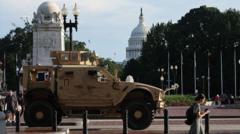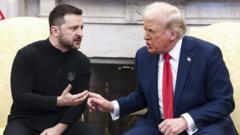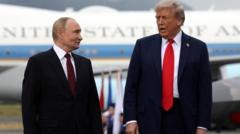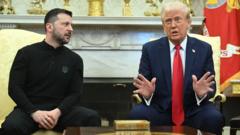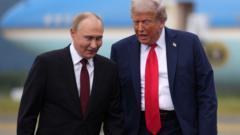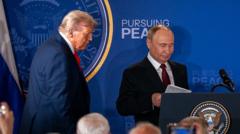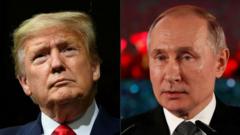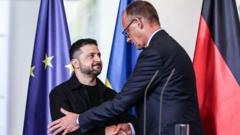The recent pause in Trump's tariff strategy has brought to light the power dynamics within the White House, particularly the contrasting roles of Treasury Secretary Scott Bessent, Commerce Secretary Howard Lutnick, and trade adviser Pete Navarro. As Bessent gains prominence for advocating a cautious approach, experts weigh in on the implications for economic policy and market stability.
A Shifting Landscape: The Dynamics of Trump's Tariff Team

A Shifting Landscape: The Dynamics of Trump's Tariff Team
An analysis of the evolving roles within President Trump's tariff strategy highlights the contrasting approaches of key players and their impact on market reactions.
In a recent turn of events, President Donald Trump's administration has created waves in economic circles by pausing several sweeping “reciprocal” tariffs, causing observers to note the significant shifts in his trade team dynamics. Treasury Secretary Scott Bessent emerged as a key figure during the press briefing following the tariff announcement, marking a decisive pivot from his past reservations regarding tariffs. Notably absent were Commerce Secretary Howard Lutnick and trade adviser Pete Navarro, leading to speculation that differing approaches have painted a complex picture of the White House's tariff strategy.
Bessent's handling of the situation has been characterized as “playing the good cop,” while Lutnick and Navarro have taken on the role of “bad cop,” according to trade experts. William Alan Reinsch, a former trade official, noted that Bessent's calm and analytical approach has likely won him the president's ear, steering the discourse towards market implications rather than an outright hawkish stance.
In the aftermath of the tariff pause, it was evident that Bessent had been in constant communication with business leaders, an effort that culminated in discussions with Trump prior to the announcement. His awareness of the bond market's responses potentially played a critical role in redirecting the president's focus from hardline rhetoric to pragmatic economic considerations.
The chaotic nature of the briefing underscored the lack of a cohesive message from the administration, as audiences were left with competing views from Bessent and Navarro. Prominent figures in economic policy suggested that this disjointed communication could lead to market confusion, with industry insiders emphasizing the need for a more unified front as tariffs evolve.
Furthermore, analysts implied that the administration’s strategic decision to allow varied spokespersons—culminating in Bessent's prominence—might have been a deliberate attempt to saturate the conversation with diverse narratives. Terry Haines, a policy consultant, warned that the current strategy could lead to disarray in market reactions if clarity isn’t established.
Looking forward, experts anticipate Bessent's role in the administration will expand while Lutnick and Navarro might shift to supportive positions, enabling a possibly more structured approach to tariff policy. This evolution could provide the stability businesses and investors seek amidst turbulent economic conditions, ultimately shaping the trajectory of the U.S. tariff landscape.
As the Trump administration recalibrates its approach, it remains to be seen how these dynamics will affect the broader economic policies that impact American commerce and global trade relations.

